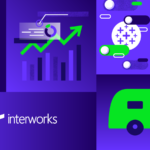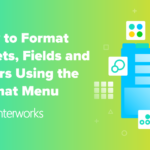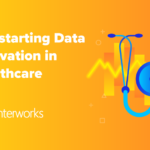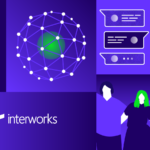A little over two weeks ago, several InterWorks BI leaders attended the Drive/2015 Conference. The mission of Drive/ is to bring together IT and data professionals from all industries to foster new ideas and relationships. Key areas of focus include data, reporting, information, visualization and exchange.
Given our wealth of data experience, InterWorks was asked to present a breakout session on data strategy. Our very own Dan Murray, Kate Treadwell and James Wright teamed up with Heather Campbell from one of our favorite clients, Princeton University, to give several different perspectives for developing a solid data strategy. Check out the full session in the video below:
NOTE: The audio is rough until around the 12-minute mark where it begins to clear up. Don’t let it deter you as the presentation itself is very insightful! Also, attached at the bottom of this post, we have the slides from the entire presentation. Feel free to follow along there or, if you’d rather, read through the following key takeaways.
The Vision – A New World Order for Data
Tableau Zen Master and InterWorks’ Director of BI Services Dan Murray kicked off the session with a presentation centered on enterprise deployment of data visualization solutions. Murray began by explaining how the BI practice at InterWorks came to be and how we became a Tableau partner after first becoming a Tableau customer. The real selling point of Tableau then was that it was 10% of the cost of traditional BI tools and very easy to use.
Murray continued by explaining how data-driven the world has become in comparison to the 1980s. We produce so much more data compared to then. Now, nearly every business has data that they can turn into value. To take advantage of that data, businesses need an effective framework in which to analyze their data. Murray explained the critical needs of information consumers in these organizations as such
- Reporting
- Analysis
- Discovery
Murray continued, stating that data visualization was the key to meeting all three of these demands, and an effective data viz platform would include these desirable qualities:
- Easy to learn/use
- Connect to many data sources
- Deploy quickly
- Manage easily
- Scale securely
For Murray, Tableau was a platform that checked each of those boxes. In Tableau, you don’t have to understand how to build something, it will give you the options. Because of this, data discovery is enhanced. Murray also highlighted Tableau’s 46+ connectors, illustrating how it can be integrated into virtually any data environment. Of course, finding the right data viz platform is just the beginning. In order to make the most of it, a system needs to be put in place to address the following challenges and opportunities:
- Accountability – moving data to where it belongs
- Availability – data from a variety of sources
- Responsiveness – tech resources on demand
Murray stressed the importance of training in each of these respects. This includes the development of a Help Desk or Center of Excellence to sustain a healthy data analysis practice. In addition to the above considerations, Murray outlined the following basic business critical needs that run alongside those considerations:
- Speed
- Security
- Governance
In respect to speed, Murray explained that starting with small, confidence-building projects (< four weeks) was an ideal course of action. He also tied speed back in to the idea of creating a Help Desk, positing that the creation of a rapid-response IT team would greatly help response time; speedy response time is crucial to continued usability. Finally, speed of analysis is crucial to success. Tools like Tableau that are accessible and flexible greatly help users to analyze data quickly.
Security is the second crucial concern when it comes to data analysis. Many organizations have hundreds of desktop users that are bleeding data, much of which needs to be secured. Data-aware storage can help to identify and secure such information, and the DataGravity Discovery Series is the first and best data-aware storage platform of its kind. It helps remove barriers between IT and BI users. Even with such tools, the right security mindset makes all the difference:
- Define what IT owns
- Define what the creator owns
- This isn’t a technology problem
The Discovery Series does much more than just security, which dovetails nicely into the next key consideration: data governance. Murray explained that tracking unstructured data presents many challenges:
- Hard to do with existing methods/technology
- Data-aware storage is part of the answer
- Populating the NAS
With the Discovery Series, IT administrators can paint a better picture of user activity and adapt accordingly.
In summary, an optimal data environment, as outlined by Murray, requires the following:
- Reporting/analysis/discovery
- Speed
- Security
The DBA/Analyst Divide
InterWorks Principal Consultant Kate Treadwell took the stage next, and her presentation focused on bridging the gap between DBAs and analysts. She stated that data community is changing, and people now have the tools to deal with their data directly. She used a coffee analogy and compared diving into your own data to jumping behind the counter and making your own coffee. This has brought the DBA/analyst divide front and center, meaning that it’s imperative to break down walls between the two groups.
Kate went on to highlight Princeton University as an example of an organization that InterWorks helped in breaking down those barriers. To achieve this, they first brought together everyone, including database experts and business users, to talk about the issues everyone was having. This resulted in everyone ending up on the same page and developing a new system that all were happy with. Another important takeaway was how InterWorks and Princeton documented this process so that in five years, when Princeton restructures their data environment again, they’ll understand the business logic behind the last revamp.
Data Strategy at Princeton
Picking up where Kate left off, Princeton’s Director of Analytics Heather Campbell gave an in-depth explanation of how they formulated an effective data strategy. They started by asking these questions:
- Why do we manage our data?
- Why do we invest in new tools?
- Why do we build reports and visualization?
- Why do we encourage process change?
Their answers were as follows:
- To answer questions
- To drive action
- To generate new ideas
- To improve efficiencies
Campbell argued that if you collect data, you need to do all you can to share it with the business. She highlighted the importance of transparency and running a smarter organization. She then outlined the key objectives of their data strategy:
- Deliver better business intelligence
- Data architecture should support business intelligence
- Stabilize and streamline data warehouse
- Cross-functionally utilize technical and business staff
- Position technology resources for the next several years
Campbell recounted the initial challenges met between IT and Research teams at Princeton, both of which initially had competing priorities. To reconcile these groups, they streamlined the functions of each and merged into one team. Instead of assigning functions to specific people, they began to give people the tools to expand beyond traditional roles. This resulted in a more circular process and allowed for more business investigation. This restructuring effort has now led to positive process change. Everyone on the team is learning the same tools such as Tableau and a new ETL tool. As they continue to learn and grow, the new team is following Better Business Intelligence Guiding Principles:
- Producing faster, deeper visual analytics
- It’s all about perspective – build for buy-in
- Information empathy
- Writing specs/requirements gathering IS OUT
- Creative prototyping IS IN
- Iterative collaborations
- Transparent and flexible business rules
- Streamline BI redundancy => streamline sources => streamline the data warehouse
From there, she explained how they leverage these principles in conjunction with several Building Blocks of Business Intelligence:
- Identify data resources
- Build data model
- Review business question
- Data exploration
- Dashboard prototyping
- External review
- Drive action
InterWorks assisted in piecing the blocks together with a full data warehouse assessment, helping Princeton to identify priorities and appropriate courses of action. This led to more overarching guiding principles for what their data environment should be:
- In progress and will always be in progress; build to support flexibility
- Separate comfort from what’s best for the organization
- Be ready to pivot; easy to change, update manipulate, but still functional as is
- Sustainability; uncoupled from vendors, applications and resources
Tableau works incredibly well with the above principles and enables Princeton to sustain their own data analysis effort independent of vendors. More importantly, it allows for clear communication of what the data is saying as Tableau dashboards are engaging and visually appealing. They make people want to interact with the data. Campbell closed her presentation with a brief walkthrough of how Princeton prototypes data hierarchies in Tableau and shares them to rest of the organization, all driven by their unified team.
Driving Data Adoption – Shifting Consumer Culture
The final portion of the session was presented by InterWorks Principal Consultant James Wright and examined how organizations can foster data adoption by shifting their consumer culture.
James began by outlining what we can do with data. Simply, we can:
- Gather it
- Store + Process it
- Act on it
Wright went on to explain that user adoption, or cultural shift, is essentially the tip of the data “iceberg.” This can be the most difficult part of creating an effective data infrastructure, but it doesn’t have to be; it just needs the right catalyst to set it into motion.
Wright used another analogy based on his original background in neuroscience of a time and energy threshold comparison concerning nerves. To change this threshold, organizations should avoid depressants like mistrusts of info, confusion, untimeliness and unnecessary complexity. Instead, they should focus on stimulants such as applicability, ease-of-access, clarity and community.
Specifically concerning the point of community, Wright laid out five points InterWorks has used to make cultural shift easier for clients:
- Focus on the consumer – design for real-world use, consolidate into single point of consumption
- Streamline effective development – create a dedicated team, provide style guides
- Earn and deserve trust – Avoid worst-case scenario, provide context
- Make it fun to use – make it fast, use consistent styling
- Avoiding the “Field of Dreams” – build community, provide activation energy, integrate




